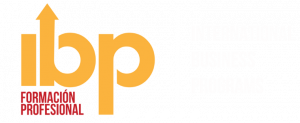Higher Degree
International Trade
International trade is a degree that will equip you with skills and knowledge required to successfully operate on global markets, including international trade regulations and import/export business strategy development.
- 2000 Hours
- Start date: September
- Course valid for application for a study visa with work permit
Certified Center
Authorized Center - Code 08078555

Description
The role of international trade has been ever-increasing especially since Spain joined the European Union (EU) in 1986. International trade comprises commercial cooperation both within the EU and with third countries, and is heavily influenced by new technologies.
The globalization processes that came into being at the start of the new millennium have significantly boosted the scope and volume of international exchange, driving transport companies to staff up in order to cover the rising needs of the industry. The knowledge and skills for this career can be obtained from our vocational training program.
Qualification level
Advanced Technical Degree in International Trade (“Técnico Superior en Comercio Internacional”)
Denomination: International Trade
Level: Advanced Level Vocational Training (“Formación Profesional de Grado Superior”).
Admission requirements
- Baccalaureate (“Bachillerato”) or equivalent qualification.
- If you have not completed your studies in Spain, you must have yourcertificate homologated. You can start the course with just the homologation application form, but you can only request the degreeonce the homologation has been completed.
Career opportunities
The people who obtain this title carry out their activity in companies of any productive sector and mainly in the trade and marketing sector public and private, carrying out functions of planning, organization, management and advice on international trade activities.
Self-employed workers who manage their company, carrying out activities of international trade, or workers employed by others who carry out their activity in the international trade department within the subsectors of:
– Industry, trade and agriculture, in the department of international trade.
– Financial and insurance entities, in the foreign department.
– Intermediary companies in international trade, such as agencies
freight forwarders, commercial agencies, consignee companies, shipping agencies customs and commercial and legal advice companies, among others.
– Importing, exporting and distributing marketing companies.
– Logistics and transport companies.
– Associations, institutions, agencies and non-governmental organizations.
The most relevant occupations and jobs are the following:
– Specialist in foreign trade.
– External operations specialist for financial and insurance entities.
– Specialist in international trade administration.
– Assistant or associate of international trade.
– International trade agent.
– International marketing specialist.
– International digital marketing specialist.
– International sales specialist.
– Assistant to the department of international commercial operations.
– Forwarder.
– Ship agent.
– Logistic operator.
– Warehouse manager.
– Specialist in transport logistics.
– Logistic coordinator.
– Specialist in reverse logistics.
Subjects
First year | Hours |
|---|---|
Administrative management in international trade | 165h / 5h week |
Economic and financial management | 132h / 4h week |
Warehouse logistics | 99h / 3h week |
Market information system | 66h / 2h week |
English | 132h / 4h week |
Second foreign language | 132h / 4h week |
Job training and career guidance | 66h / 2h week |
Tutorship | 1h week |
Total hours per week | 24h. |
Second year | Hours |
|---|---|
International funding | 99h / 3h week |
International payment methods | 66h / 2h week |
International transport of goods | 132h / 4h week |
International marketing | 99h / 3h week |
International negotiating | 66h / 2h week |
International digital commerce | 66h / 2h week |
International trade project | 264h |
Proprietary module on management software tools | 165h |
Tutorship | 1h week |
Total hours per week | 20h |
Software tools |
|---|
The project module includes hours that will be dedicated to software solutions businesses use for administrative purposes, such as payroll management systems; budgeting, procurement and waybill tools; accounting information systems to manage journals, cash entry books, quarterly reports, balances and profit and loss statements. |
|

